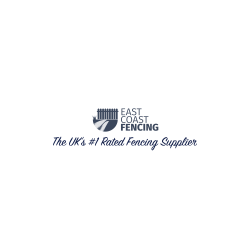Does Home Insurance Cover Garden Fences?

In the tranquillity of our own homes, we often overlook the silent guardians that mark the boundaries of our personal space – our garden fences. Whether it’s to keep pets in, unwanted visitors out, or simply to add a touch of privacy and aesthetic appeal to our homes, garden fences play a crucial role in the functionality and appearance of our properties. But when storms wreak havoc or accidental damage occurs, the question arises - does home insurance actually cover garden fences?
The Short Answer
Typically, home insurance policies include coverage for structures that are part of your property, which usually encompasses garden fences. However, the level of coverage and what is specifically included can vary greatly between policies and insurance providers. Therefore, the short answer is yes, home insurance can cover garden fences, but it's important to understand the nuances of your own policy to be sure.
Understanding the Coverage
Buildings Insurance:
Most standard buildings insurance policies are designed to cover the cost of repairing or rebuilding the structure of your home, which generally includes permanent fixtures such as garden fences. However, it is not uncommon for there to be certain conditions or exclusions.
Specified Risks:
Typically, any damage caused by specified risks such as fire, storms, floods, vandalism, or vehicle collisions may be covered. This aspect of your policy ensures that in the event of such incidents, you're able to claim for repairs or replacement of your damaged garden fence.
Wear and Tear:
It's crucial to note that most insurance policies do not cover damage due to wear and tear or lack of maintenance. If your fence is aging or was already in a state of disrepair before any incident, your insurer might not approve your claim.
Policy Exclusions:
Always pay close attention to the exclusions section of your home insurance policy. Some insurers might exclude certain types of damage or specific circumstances, such as damage caused by rot or pests.
Navigating the Claims Process
If you find yourself in the position of needing to make a claim for your garden fence, here are a few steps to follow:
- Check Your Policy: Before making a claim, review your insurance policy to confirm that the damage is covered.
- Document the Damage: Take photographs and detailed notes of the damage, which will be crucial in supporting your claim.
- Report Promptly: Contact your insurance provider as soon as possible to report the damage. Delaying this can sometimes affect the outcome of your claim.
- Seek Quotes: It’s a good idea to obtain quotes from contractors for the repair or replacement of your fence. Your insurer may require these as part of the claims process.
Tips for Ensuring Coverage
- Regular Maintenance: Regularly check and maintain your garden fence to prevent wear and tear and ensure it’s in good condition.
- Understand Your Policy: Familiarise yourself with the terms, conditions, and exclusions of your policy. If in doubt, reach out to your insurer for clarification.
- Consider Additional Coverage: If your current policy does not offer sufficient coverage for garden fences or if you're particularly concerned about specific risks, consider speaking to your insurance provider about additional coverage options.
In conclusion, while home insurance policies can cover garden fences, the extent of the coverage is highly dependent on your specific policy and the circumstances surrounding any damage. By understanding the details of your policy and following the steps outlined above, you can ensure that your garden fence is protected in line with your expectations. Remember, when in doubt, it’s always best to directly consult with your insurance provider to get the most accurate and applicable information for your situation.














Leave a Comment